|
|
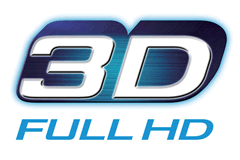 Compatible with 3D image signals in full HD resolution.
Compatible with 3D image signals in full HD resolution. |
| |
| |
SHOW PRODUCTS |
|
|
|
|
|
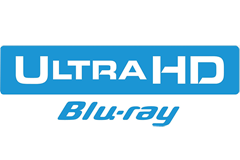 The Device is capable of playing 4K UHD Blu-Ray discs.
The Device is capable of playing 4K UHD Blu-Ray discs. |
| |
| |
SHOW PRODUCTS |
|
|
|
|
|
 By disabling all post-processing (e.g. motion smoothing, etc.) and preserving the correct aspect ratios, colors and frame rates, Filmmaker Mode enables your TV to display the movie or television show’s content precisely as it was intended by the filmmaker.
By disabling all post-processing (e.g. motion smoothing, etc.) and preserving the correct aspect ratios, colors and frame rates, Filmmaker Mode enables your TV to display the movie or television show’s content precisely as it was intended by the filmmaker. |
| |
| Read more about Filmmaker Mode |
SHOW PRODUCTS |
|
|
|
|
|
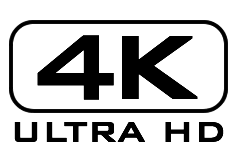 The device supports full 4K UHD (3840 x 2160) resolution
The device supports full 4K UHD (3840 x 2160) resolution |
| |
| |
SHOW PRODUCTS |
|
|
|
|
|
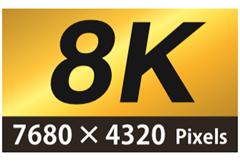 The device supports 8K Full UHD (7680 x 4320) resolution
The device supports 8K Full UHD (7680 x 4320) resolution |
| |
| |
SHOW PRODUCTS |
|
|
|
|
|
 OLED (Organic Light Emitting Diode) is an advanced display technology where each pixel emits its own light, without the need for backlighting. This results in deeper blacks, high contrast, and impressive color reproduction. OLED screens are thinner, more energy-efficient, and ideal for movies, gaming, and professional use.
OLED (Organic Light Emitting Diode) is an advanced display technology where each pixel emits its own light, without the need for backlighting. This results in deeper blacks, high contrast, and impressive color reproduction. OLED screens are thinner, more energy-efficient, and ideal for movies, gaming, and professional use. |
| |
| |
SHOW PRODUCTS |
|
|
|
|
|
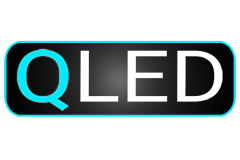 QLED (Quantum Dot Light Emitting Diode) is a display technology that uses Quantum Dots to enhance color accuracy and brightness in LED TVs. It delivers deeper colors, higher contrast, and improved brightness compared to traditional LED screens while avoiding the burn-in risk associated with OLED.
QLED (Quantum Dot Light Emitting Diode) is a display technology that uses Quantum Dots to enhance color accuracy and brightness in LED TVs. It delivers deeper colors, higher contrast, and improved brightness compared to traditional LED screens while avoiding the burn-in risk associated with OLED. |
| |
| |
SHOW PRODUCTS |
|
|
|
|
|
 Lens shifting is predominantly found in projectors. It allows adjustment of the displayed picture, without physically repositioning the projector; instead, the lens inside the housing shifts and moves in order to allow the desired adjustment.
Lens shifting is predominantly found in projectors. It allows adjustment of the displayed picture, without physically repositioning the projector; instead, the lens inside the housing shifts and moves in order to allow the desired adjustment. |
| |
| Read more about Lens shift |
SHOW PRODUCTS |
|
|
|
|
|
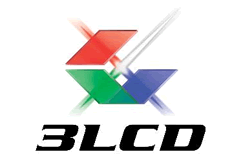 3LCD is at teknologi present in projectors. The Light source projects a white light, which is split and divided among 3 chips, each generating an image in a basic color (blue, green and red). The 3 images are then combined in a focusing prism, creating the full-color image, and projected onto the screen.
3LCD is at teknologi present in projectors. The Light source projects a white light, which is split and divided among 3 chips, each generating an image in a basic color (blue, green and red). The 3 images are then combined in a focusing prism, creating the full-color image, and projected onto the screen. |
| |
| |
SHOW PRODUCTS |
|
|
|
|
|
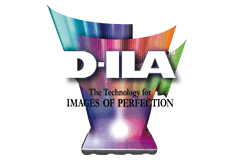 D-ILA (Direct Drive Image Light Amplifier) is a technology compriosed of three individually colored chips (blue, green, and red). The light source is polarized, split, and reflected off of each chip, then focused and magnified through a lens to construct the image projected onto the screen.
D-ILA (Direct Drive Image Light Amplifier) is a technology compriosed of three individually colored chips (blue, green, and red). The light source is polarized, split, and reflected off of each chip, then focused and magnified through a lens to construct the image projected onto the screen. |
| |
| |
SHOW PRODUCTS |
|
|
|
|
|
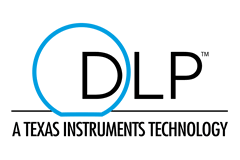 DLP - Digital Light Processing - utilizes a digital chip with several micromirrors to reflect the light from the lamp onto the screen. The light passes through a colorwheel spinning at several thousand rounds per minute in order to colorize the light reflected, resulting in the final processed image.
DLP - Digital Light Processing - utilizes a digital chip with several micromirrors to reflect the light from the lamp onto the screen. The light passes through a colorwheel spinning at several thousand rounds per minute in order to colorize the light reflected, resulting in the final processed image. |
| |
| |
SHOW PRODUCTS |
|
|
|
|
|
 Silicon X-tal Reflective Display - SXRD is a proprietary of Sony, similar in design to D-ILA technology. The light is seperated and reflected through 3 liquid crystal panels, each in their own color (blue, green and red). The colors are then combined and focused through a lens, creating the final image.
Silicon X-tal Reflective Display - SXRD is a proprietary of Sony, similar in design to D-ILA technology. The light is seperated and reflected through 3 liquid crystal panels, each in their own color (blue, green and red). The colors are then combined and focused through a lens, creating the final image. |
| |
| |
SHOW PRODUCTS |
|
|
|
|
|
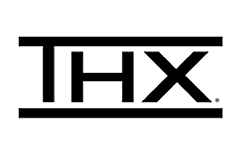 THX is neither a technology, nor a recording format, but rather a quality assurance standard. A THX-certified movie theater can be expected to deliver an audio/video experience close to what the mixing engineers intended.
THX is neither a technology, nor a recording format, but rather a quality assurance standard. A THX-certified movie theater can be expected to deliver an audio/video experience close to what the mixing engineers intended.
Consumer equipment bearing the certification has the same intention as mentioned above, albeit on a smaller scale. |
| |
| Read more about THX Certified |
SHOW PRODUCTS |
|
|
|
|
|
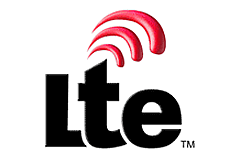 LTE (Long-Term Evolution) is a standard for wireless communication for mobile phones and portable data devices. It allows data to be transmitted in high speed, and is widely present in smartphones and tablets.
LTE (Long-Term Evolution) is a standard for wireless communication for mobile phones and portable data devices. It allows data to be transmitted in high speed, and is widely present in smartphones and tablets. |
| |
| |
SHOW PRODUCTS |
|
|
|
|
|
 Stofa approves this product for use with their signal transmission.
Stofa approves this product for use with their signal transmission. |
| |
| |
SHOW PRODUCTS |
|
|
|
|
|
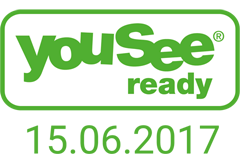 YouSee approves this product as being capable of transmitting their signals.
YouSee approves this product as being capable of transmitting their signals. |
| |
| |
SHOW PRODUCTS |
|
|
|
|
|
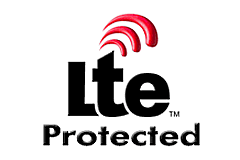 This product is protected from LTE signals, which can disrupt digital TV broadcasting.
This product is protected from LTE signals, which can disrupt digital TV broadcasting. |
| |
| |
SHOW PRODUCTS |
|
|
|
|
|
 Active noise cancellation (ANC) uses microphones to detect surrounding sounds and emits opposite sound waves to cancel them out. It effectively reduces distracting noise like traffic, engine sounds and conversations, so you can enjoy music, calls and podcasts with greater clarity. ANC is especially effective against low, consistent sounds and works best when combined with passive noise isolation. The result is a calmer, more focused and comfortable listening experience, without the need to turn up the volume.
Active noise cancellation (ANC) uses microphones to detect surrounding sounds and emits opposite sound waves to cancel them out. It effectively reduces distracting noise like traffic, engine sounds and conversations, so you can enjoy music, calls and podcasts with greater clarity. ANC is especially effective against low, consistent sounds and works best when combined with passive noise isolation. The result is a calmer, more focused and comfortable listening experience, without the need to turn up the volume. |
| |
| |
SHOW PRODUCTS |
|
|
|
|
|
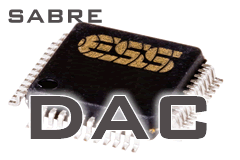 Sabre 32 is a famous high precision DAC (Digital to Analog Converter), which handles conversion of up to 32-bit digital signals. Sabre 32 from ESS Technology is famed for its quality, and found in many upper grade stereo components.
Sabre 32 is a famous high precision DAC (Digital to Analog Converter), which handles conversion of up to 32-bit digital signals. Sabre 32 from ESS Technology is famed for its quality, and found in many upper grade stereo components. |
| |
| |
SHOW PRODUCTS |
|
|
|
|
|
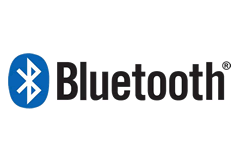 Bluetooth is a wireless technology for data transfer between enabled devices over short distances. Intended to be a universal means of communication, it is supported by a vast number of consumer electronics. A common use is for the transfer of audio between mobile devices and headphones.
Bluetooth is a wireless technology for data transfer between enabled devices over short distances. Intended to be a universal means of communication, it is supported by a vast number of consumer electronics. A common use is for the transfer of audio between mobile devices and headphones.
Bluetooth has been developed through many years and audio quality has been highly improved throuhgout the years, by use of Apt-X protocol for loss less streaming.
Bluetooth is of swedish origin, and takes its name from the danish king of old, Harald Blåtand (Bluetooth being the anglicised form), who united dissonant danish tribes into a single kingdom. The logo is a merging of the runes for "H" and "B", the king's initials. |
| |
| Read more about Bluetooth |
SHOW PRODUCTS |
|
|
|
|
|
 High impedance (HZ) amplifiers and speakers for use in larger 70/100 Volt installations playing from the same amplifier channel. 100 Volt systems are often used where many loudspeakers must be installed in parallel, e.g. in hotel corridors, lobbies, restaurant and banquet rooms and outdoor speakers. 100V speakers are available both as built-in or for wall mounting.
High impedance (HZ) amplifiers and speakers for use in larger 70/100 Volt installations playing from the same amplifier channel. 100 Volt systems are often used where many loudspeakers must be installed in parallel, e.g. in hotel corridors, lobbies, restaurant and banquet rooms and outdoor speakers. 100V speakers are available both as built-in or for wall mounting.
Remember that both speaker and amplifier must be approved for 70/100V operation and are not normally used in Hi-Fi contexts. |
| |
| |
SHOW PRODUCTS |
|
|
|
|
|
 Amplifiers or speakers with low impedance (4-8 Ohm / LZ), which are used in regular mono and stereo systems. It is primarily used in low-impedance loudspeakers and systems, stereo and surround systems, as well as in simple professional installations, where normally only one to two loudspeakers are included per unit. channel.
Amplifiers or speakers with low impedance (4-8 Ohm / LZ), which are used in regular mono and stereo systems. It is primarily used in low-impedance loudspeakers and systems, stereo and surround systems, as well as in simple professional installations, where normally only one to two loudspeakers are included per unit. channel. |
| |
| |
SHOW PRODUCTS |
|
|
|
|
|
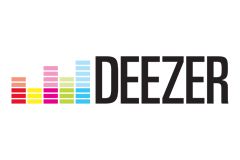 Deezer is a music streaming service, and one of the largest worldwide. Available as free, as well as paid subscriptions, with the differences being in included advertising and sound quality. Implementation of Deezer in audio equipment, allows for easy acces to playlists and playback controls through mobile devices.
Deezer is a music streaming service, and one of the largest worldwide. Available as free, as well as paid subscriptions, with the differences being in included advertising and sound quality. Implementation of Deezer in audio equipment, allows for easy acces to playlists and playback controls through mobile devices. |
| |
| Read more about Music streaming – Deezer |
SHOW PRODUCTS |
|
|
|
|
|
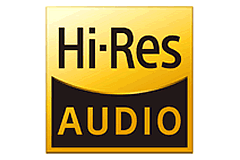 High Resolution Audio is a broad term for sound reproduced above 16-bit linear depth, which is the norm for standard audio CDs.
High Resolution Audio is a broad term for sound reproduced above 16-bit linear depth, which is the norm for standard audio CDs. |
| |
| |
SHOW PRODUCTS |
|
|
|
|
|
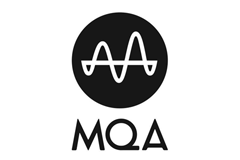 MQA is a high resolution streaming technology that gives you original master recording quality from a music streaming service. It’s the core of TIDAL’s vast TIDAL Masters catalogue. And while far from exhaustive, it does include some pretty incredible works of art.
MQA is a high resolution streaming technology that gives you original master recording quality from a music streaming service. It’s the core of TIDAL’s vast TIDAL Masters catalogue. And while far from exhaustive, it does include some pretty incredible works of art.
These are albums you can stream at resolutions up to 24-bit, 192kHz, giving you a mind-boggling resolution that helps create a deeper, more immersive listening experience.
However, none of this is without certain caveats. While TIDAL Masters will offer up 24-bit, 192kHz, just because it’s a Masters track doesn’t mean it will hit those incredible heights. In fact, most don’t. The majority of masters titles are going to sit somewhere between 48 and 96kHz, which is admittedly far from the shiny 24/192 that’s continually advertised.
While, yes, not every Masters track is a hefty 24-bit/192kHz in resolution, what you do get is well beyond CD quality. |
| |
| Read more about Music streaming – MQA |
SHOW PRODUCTS |
|
|
|
|
|
 Spotify is one of the biggest music streaming services in the world. Available as a free subscription which features advertisements, and as a paid subscription with improved streaming quality and absence of advertisements.
Spotify is one of the biggest music streaming services in the world. Available as a free subscription which features advertisements, and as a paid subscription with improved streaming quality and absence of advertisements.
Consumer electronics featuring the Spotify logo can remotely playback Spotify tracks and playlists via a computer or mobile device. |
| |
| Read more about Music streaming – Spotify |
SHOW PRODUCTS |
|
|
|
|
|
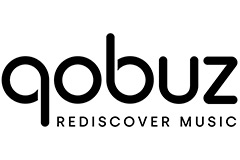 Qobuz was created for those who love music with passion and precision. Since 2008, the service has been a pioneer in sound quality and was the first in the world to offer CD-quality and 24-bit Hi-Res files for both download and streaming. With a unique editorial approach and a genuine love for music history, Qobuz delivers an experience that goes far beyond playlists – here you get music as it was meant to be heard, in the highest quality and with deep context.
Qobuz was created for those who love music with passion and precision. Since 2008, the service has been a pioneer in sound quality and was the first in the world to offer CD-quality and 24-bit Hi-Res files for both download and streaming. With a unique editorial approach and a genuine love for music history, Qobuz delivers an experience that goes far beyond playlists – here you get music as it was meant to be heard, in the highest quality and with deep context.
Qobuz combines top-tier sound with expert music recommendations, articles and curated album selections. It's the platform for audiophiles and curious listeners who want to explore both new releases and the rich legacy of recorded music. The name comes from the mystical Central Asian instrument "kobyz", and just like this instrument, Qobuz aims to elevate the music experience to something almost magical.
|
| |
| Read more about Musik streaming – Qobuz Connect |
SHOW PRODUCTS |
|
|
|
|
|
 Roon ready means that the manufacturer has implemented roon labs RAAT network interface protocol directly into the device (network amplifier or streaming player) and has become a certified partner of roon. Thereby, the streaming player / amplifier works with the highest streaming quality from roon via RAAT, which was available at the time of development, and possibly. later via updates.
Roon ready means that the manufacturer has implemented roon labs RAAT network interface protocol directly into the device (network amplifier or streaming player) and has become a certified partner of roon. Thereby, the streaming player / amplifier works with the highest streaming quality from roon via RAAT, which was available at the time of development, and possibly. later via updates. |
| |
| Read more about Musik streaming – Roon ready |
SHOW PRODUCTS |
|
|
|
|
|
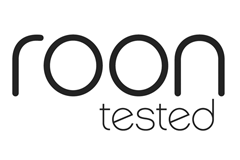 Roon tested means that devices have a built-in USB-DAC, ChromeCast or Apple Airplay, all of which are compatible streaming options and thus end-points for the roon universe. To get "roon tested", it also requires that the device has been reviewed by the roon labs QA team and thereby registered correctly in the roon software, for optimal streaming utilization.
Roon tested means that devices have a built-in USB-DAC, ChromeCast or Apple Airplay, all of which are compatible streaming options and thus end-points for the roon universe. To get "roon tested", it also requires that the device has been reviewed by the roon labs QA team and thereby registered correctly in the roon software, for optimal streaming utilization.
Devices that have only been "roon tested" cannot take advantage of the full Roon functionality and sound quality achieved with roon's RAAT protocol. To stream with RAAT, it requires that the device is "roon ready" certified. The streaming quality of the sound for "roon tested" devices therefore depends entirely on the type of streaming used and its limitations. |
| |
| Read more about Musik streaming – Roon tested |
SHOW PRODUCTS |
|
|
|
|
|
 Tidal is a service for music streaming. It differentiates itself from other services by providing Hi-Fi grade lossless audio quality, comparable to CD or better. It is strictly available as a paid service, with subscription costs tied to quality of the audio tracks.
Tidal is a service for music streaming. It differentiates itself from other services by providing Hi-Fi grade lossless audio quality, comparable to CD or better. It is strictly available as a paid service, with subscription costs tied to quality of the audio tracks. |
| |
| Read more about Musik streaming – Tidal |
SHOW PRODUCTS |
|
|
|
|
|
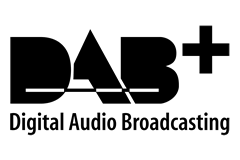 DAB+ is an evolution of the original DAB signal, and features better error correction in poor reception areas. As radiostations have moved to DAB+ older DAB-radios are becoming unusable. Digital radios and tuners available today all feature DAB+.
DAB+ is an evolution of the original DAB signal, and features better error correction in poor reception areas. As radiostations have moved to DAB+ older DAB-radios are becoming unusable. Digital radios and tuners available today all feature DAB+. |
| |
| Read more about Radio – DAB+ |
SHOW PRODUCTS |
|
|
|
|
|
 Internet radio has some similarities with DAB: Digital radio with high stability, and no noise issues. Where DAB is transmitted through antennae, internet radio needs an internet connection either through ethernet or WLAN. Internet radio makes it possible to access radio channels from around the world. The feature is most commonly found in tabletop radios, as well as stereo and surround receivers.
Internet radio has some similarities with DAB: Digital radio with high stability, and no noise issues. Where DAB is transmitted through antennae, internet radio needs an internet connection either through ethernet or WLAN. Internet radio makes it possible to access radio channels from around the world. The feature is most commonly found in tabletop radios, as well as stereo and surround receivers.
Internet radio recieption are often through apps as Vtuner, Last.fm or direct in the streaming software by e.g. Sonos, Yamaha MusicCast eller Bose SoundTouch. |
| |
| |
SHOW PRODUCTS |
|
|
|
|
|
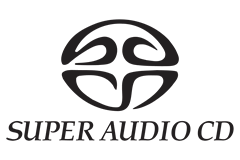 Audio format based upon the current CD standards but includes a greater amount of information that provides higher quality sound. There are three types of discs: single layer, dual layer and hybrid discs. The hybrid disc can be played on existing CD players as well as Super Audio CD players since it contains both standard audio CD and Super Audio CD information.
Audio format based upon the current CD standards but includes a greater amount of information that provides higher quality sound. There are three types of discs: single layer, dual layer and hybrid discs. The hybrid disc can be played on existing CD players as well as Super Audio CD players since it contains both standard audio CD and Super Audio CD information.
“Super Audio CD” is a trademark. |
| |
| |
SHOW PRODUCTS |
|
|
|
|
|
 Dolby Atmos is a technology for surround sound. By utilizing ceiling-mounted speakers, the listener is given a dedicated rendition of sounds coming from above. Alternatively, reflection speakers may be used, which are commonly placed on top of the front speakers.
Dolby Atmos is a technology for surround sound. By utilizing ceiling-mounted speakers, the listener is given a dedicated rendition of sounds coming from above. Alternatively, reflection speakers may be used, which are commonly placed on top of the front speakers. |
| |
| Read more about Surround – Dolby Atmos |
SHOW PRODUCTS |
|
|
|
|
|
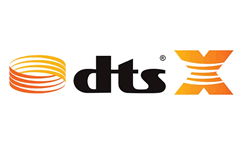 DTS:X is an object-based audio which creates better multi-dimensional sound. The audio track is coded to make each speaker better reflect the spacial position of the sound, giving a more lifelike sound experience.
DTS:X is an object-based audio which creates better multi-dimensional sound. The audio track is coded to make each speaker better reflect the spacial position of the sound, giving a more lifelike sound experience.
DTS:X lets the user adjust only the voice track, making dialogue easily audible. |
| |
| Read more about Surround – DTS:X® |
SHOW PRODUCTS |
|
|
|
|
|
 Netflix is one of the leading streaming services in the world, available through a paid subscription. Besides an everchanging, extensive archive of movies and TV-series, Netflix also offers unique features from its own production company. Netflix is widely available, and commonly found in smart TVs, Blu-Ray and media players.
Netflix is one of the leading streaming services in the world, available through a paid subscription. Besides an everchanging, extensive archive of movies and TV-series, Netflix also offers unique features from its own production company. Netflix is widely available, and commonly found in smart TVs, Blu-Ray and media players. |
| |
| Read more about TV streaming – Netflix |
SHOW PRODUCTS |
|
|
|
|
|
 AirPlay is a proprietary protocol developed by Apple, which allows wireless streaming of data - audio being the most popular. Originally only Apple products could communicate on the protocol, but it has since been licensed to manufacturers and developers. AirPlay was instrumental in making wireless streaming of music popular, and is stil found in consumer electronics.
AirPlay is a proprietary protocol developed by Apple, which allows wireless streaming of data - audio being the most popular. Originally only Apple products could communicate on the protocol, but it has since been licensed to manufacturers and developers. AirPlay was instrumental in making wireless streaming of music popular, and is stil found in consumer electronics. |
| |
| |
SHOW PRODUCTS |
|
|
|
|
|
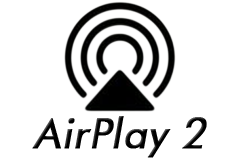 AirPlay 2 from Apple is the updated AirPlay standard for streaming and multi-room audio for the smart home, and was launched with iOS 11. AirPlay 2 makes it possible to stream music to multiple rooms at once, via an iPhone or iPad, and will also be able to integrate with HomeKit, for intelligent control and interaction with other HomeKit compatible devices.
AirPlay 2 from Apple is the updated AirPlay standard for streaming and multi-room audio for the smart home, and was launched with iOS 11. AirPlay 2 makes it possible to stream music to multiple rooms at once, via an iPhone or iPad, and will also be able to integrate with HomeKit, for intelligent control and interaction with other HomeKit compatible devices.
With AirPlay, you can stream sound in high and delicious quality, wirelessly over the network to the devices that support this. Almost all new amplifiers and receivers on the market have support for both Airplay 2 and ChromeCast, which makes it easier than ever to get great sound in the home - without all the hassle.
An amplifier with built-in Airplay 2 (also backwards compatible with Airplay) will in many cases be able to switch on by itself when it detects that you are streaming to it. You then have control to regulate the volume, and of course also switch between the songs or content you may be streaming. Since Airplay 2 makes use of the network, this means that the quality that can be streamed is significantly higher than, for example, Bluetooth, which cannot move anywhere near the same amount of data. If you have an iPhone or iPad and want a simple and delicious streaming solution, take a look at the amplifiers and receivers we offer. |
| |
| |
SHOW PRODUCTS |
|
|
|
|
|
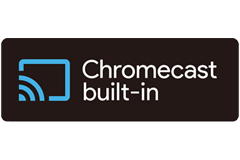 Chromecast built-in - formerly known as Google Cast - utilizes the features of a Chromecast, but as a native part of Audio/Video devices. While connected to the same network, a smartphone or tablet may stream audio and/or video being played back to a device with Chromecast built-in.
Chromecast built-in - formerly known as Google Cast - utilizes the features of a Chromecast, but as a native part of Audio/Video devices. While connected to the same network, a smartphone or tablet may stream audio and/or video being played back to a device with Chromecast built-in.
This feature means that the product has the option of being set up in Google Home on your smartphone, tablet or similar. You can then stream music easily and simply directly to the amplifier, without any difficulty and in high quality. If you have one or more voice-controlled Google devices, you will also be able to control your amplifier with your voice. For example, you can ask Google to turn it up, change the song, or something else entirely. The amplifier / receiver becomes part of a Google Home system, where the units talk to each other, and operation is made playfully easy.
The ChromeCast function is found in more and more products today, and is a simple solution when you want to start streaming music in high quality without wires and all the hassle. Setup is easy via the Google Home app, and works on both Android and iOS so that everyone can participate. |
| |
| Read more about Wi-Fi streaming – Chromecast built-in |
SHOW PRODUCTS |
|
|
|
|
|
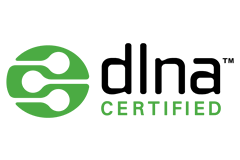 dlna (Digital Living Network Alliance) is an industry standard for sharing data on a network. In audio/video equipment, it allows the playback of files on a network connected storage unit throgh a dedicated playback-enabled device on the same network.
dlna (Digital Living Network Alliance) is an industry standard for sharing data on a network. In audio/video equipment, it allows the playback of files on a network connected storage unit throgh a dedicated playback-enabled device on the same network. |
| |
| Read more about Wi-Fi streaming – DLNA |
SHOW PRODUCTS |
|
|
|
|
|
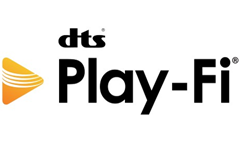 DTS Play-Fi is an open streaming and multiroom standard. It allows devices of different manufacturers to be connected and controlled on the same network. A high end home theater setup will work in unison with smaller active speakers from another, seamlessly controlled from the Play-Fi app.
DTS Play-Fi is an open streaming and multiroom standard. It allows devices of different manufacturers to be connected and controlled on the same network. A high end home theater setup will work in unison with smaller active speakers from another, seamlessly controlled from the Play-Fi app.
A number of major audio/video manufacturers have already implemented the feature, with many more to come. Brands supporting Play-Fi include Klipsch, Anthem and Onkyo. |
| |
| Read more about Wi-Fi streaming – DTS Play-Fi |
SHOW PRODUCTS |
|
|
|
|
|
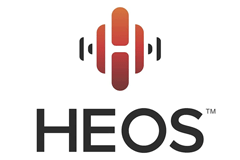 HEOS is a multi-room solution from Marantz/Denon which makes it possible to control your entire home system from one and the same app, across the supported devices - can most of all be compared to Sonos.
HEOS is a multi-room solution from Marantz/Denon which makes it possible to control your entire home system from one and the same app, across the supported devices - can most of all be compared to Sonos.
Virtually all modern Marantz receivers and amplifiers today come with HEOS support. Here you have the option of getting the supported devices to talk to each other on the same home network via an app on your phone or tablet. You can thereby get delicious sound in several rooms, and control everything from one and the same place. There is a wide range of different devices, amplifiers and speakers that support HEOS, both from Marantz and Denon which come from the same manufacturer.
The system works as we know it from Sonos and Google, with simple operation, simple set-up and the possibility of continuous expansion without the large expenses. We at AV-Connection offer several different amplifiers and products from Marantz that support HEOS. |
| |
| Read more about Wi-Fi streaming – HEOS |
SHOW PRODUCTS |
|
|
|
|
|
 Miracast is a simple and effective wireless standard for screen sharing, e.g. to get an image from a computer to a projector or large screen. Miracast connects directly between compatible devices that are close to each other, and thus does not need to be connected to the Wi-Fi network.
Miracast is a simple and effective wireless standard for screen sharing, e.g. to get an image from a computer to a projector or large screen. Miracast connects directly between compatible devices that are close to each other, and thus does not need to be connected to the Wi-Fi network.
- It is really smart in teaching scenarios, or when guests in a company who have to show a presentation in a meeting room or conference room.
Miracast is built into Windows, and on Mac computers you just need to download a Miracast app. |
| |
| |
SHOW PRODUCTS |
|
|
|
|
|
 MusicCast is a multiroom and streaming system unique to Yamaha products. As with many systems it is controlled via a complimentary app, which lets the user choose which rooms and units are currently playing. MusicCast supports a selection of streaming services such as Spotify, Tidal and Deezer, but also supports playback of audio files on network drives.
MusicCast is a multiroom and streaming system unique to Yamaha products. As with many systems it is controlled via a complimentary app, which lets the user choose which rooms and units are currently playing. MusicCast supports a selection of streaming services such as Spotify, Tidal and Deezer, but also supports playback of audio files on network drives.
A unique feature is restreaming. Stream wirelessly to any unit using Bluetooth or AirPlay, and distribute it around the house through other units on the home network. Connect a turntable to a Yamaha amplifier with the MusicCast feature, and stream your vinyl to the rest of the system - an option rarely found among multiroom systems. |
| |
| |
SHOW PRODUCTS |
|
|
|
|
|
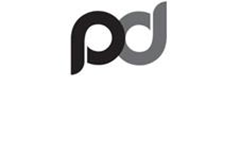 USB Power Delivery 2.0 introduced some changes to the way that power ratings between devices are handled, making the standard more flexible than before. The old set of Power Profiles were removed in PD 2.0 and replaced by Power Rules that allow for a wider range of current negotiations. The USB 3.1 specification adopted Power Profiles instead, but is only rated up to 15W rather than 100W.
USB Power Delivery 2.0 introduced some changes to the way that power ratings between devices are handled, making the standard more flexible than before. The old set of Power Profiles were removed in PD 2.0 and replaced by Power Rules that allow for a wider range of current negotiations. The USB 3.1 specification adopted Power Profiles instead, but is only rated up to 15W rather than 100W.
PD 3.0 made some tweaks to enhance power delivery, but the Power Rules are the same as PD 2.0 products. Rules are split into four target power categories; 7.5W, >15W, >27W, and >45W; each of which offers a range of voltage and current configurations. Sources supplying more than 15 watts offer voltages of 5 and 9 volts, those supplying more than 27 watts offer 5, 9 and 15 volts, and those supplying more than 45 watts offer 5, 9, 15 and 20 volts. The maximum 100W power supply is achieved with 20V and up to 5A, although all of the other modes cap out at 3A, depending on the required power.
• Increased power levels from existing USB standards up to 100W.
• The power direction is no longer fixed. This enables the product with the power (Host or Peripheral) to provide the power.
• Optimize power management across multiple peripherals by allowing each device to take only the power it requires, and to get more power when required for a given application.
• Intelligent and flexible system-level management of power via optional hub communication with the PC.
• It allows low power cases such as headsets to negotiate for only the power they require. |
| |
| Read more about Charging: Power Delivery |
SHOW PRODUCTS |
|
|
|
|
|
 Qi (pronounced/ CHEE from the Chinese word qi) is an open interface standard that defines wireless power transfer using inductive charging over distances of up to 4 cm (1.6 inches), developed by the Wireless Power Consortium. The system uses a charging pad and a compatible device, which is placed on top of the pad, charging via resonant inductive coupling.
Qi (pronounced/ CHEE from the Chinese word qi) is an open interface standard that defines wireless power transfer using inductive charging over distances of up to 4 cm (1.6 inches), developed by the Wireless Power Consortium. The system uses a charging pad and a compatible device, which is placed on top of the pad, charging via resonant inductive coupling.
Version 1.0 - 2010 up to 5 Watt
Version 1.1 - 2012 up to 5 Watt
Version 1.2 - 2015 up to 15 Watt |
| |
| Read more about Charging: Qi wireless charging standard |
SHOW PRODUCTS |
|
|
|
|
|
 If you’re new to the concept of quick charging, the result is in the name: your smartphone charges up faster than it would without Quick Charge technology.
If you’re new to the concept of quick charging, the result is in the name: your smartphone charges up faster than it would without Quick Charge technology.
Qualcomm boasts a fourfold increase in charging times over conventional chargers with Quick Charge 3.0, up from the 40 percent speed increase offered by its first-generation technology. However, one of the interesting things to note is that Qualcomm isn’t touting massive increases in charging times over version 2.0, instead, the company is focusing on improved efficiency this time around.
Voltage
• 3.6 V to 22 V, dynamic with 200 mV increments
Max current
• 2.6 A or 4.6 A
Max power
• 36 W (12 V x 3 A)
The major new feature with 3.0 is INOV (Intelligent Negotiation for Optimum Voltage), which allows for a fined tuned power output and a more optimized charging cycle. Firstly, different batteries require different charging voltages. Version 2.0 supported four modes at varying power levels, 5 volts/2amps, 9V/2A, 12V/1.67A, and a 20 volt option. Quick Charge 3.0’s INOV communicates with the device to request any voltage between 3.2V and 20V at 200mV increments, allowing for a wider selection of voltages.
Importantly, Qualcomm has retained backward compatibility with its 2.0 and 1.0 standards. As the power draw is handled on the smartphone side, you will safely receive the maximum amount of power for your device using any of the certified chargers. However, you won’t achieve full charging speeds if you try charging newer phones with older lower power chargers.
Although Qualcomm supports Quick Charge in all of its new SoCs, it is still up to smartphone and tablet manufacturers to implement the specific circuitry required to make full use of the fastest charging speeds available. |
| |
| Read more about Charging: Quick Charge 3.0 |
SHOW PRODUCTS |
|
|
|
|
|
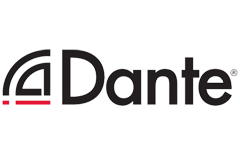 Dante is an audio networking technology developed by Audionate. Dante devices on the same network automatically detect each other. This can make setting up a system simpler and thus reduce complexity and potential errors. In this sense, Dante can be thought of as a plug-and-play network technology.
Dante is an audio networking technology developed by Audionate. Dante devices on the same network automatically detect each other. This can make setting up a system simpler and thus reduce complexity and potential errors. In this sense, Dante can be thought of as a plug-and-play network technology. |
| |
| Read more about Dante® link |
SHOW PRODUCTS |
|
|
|
|
|
 The initial versions of DisplayPort, 1.0 through 1.1a, were approved between May 2006 and January 2008. They provided a maximum bandwidth of 10.8 Gbit/s over a 4-lane main link, with cables up to 2 meters in length required for full bandwidth support.
The initial versions of DisplayPort, 1.0 through 1.1a, were approved between May 2006 and January 2008. They provided a maximum bandwidth of 10.8 Gbit/s over a 4-lane main link, with cables up to 2 meters in length required for full bandwidth support.
DP version 1.1 allowed for alternative link layers, like fiber optic, enabling longer reach without signal degradation. Additionally, HDCP and DisplayPort Content Protection were included. |
| |
| Read more about Displayport 1.1 – High Speed (HBR1 up to 10,8 Gbit/s) |
SHOW PRODUCTS |
|
|
|
|
|
 DisplayPort (DP) version 1.2, launched in 2010, brought several enhancements to the standard for monitor connections. The update increased the maximum data rate, allowed higher resolutions and refresh rates, and supported multiple screens through MST. It also included support for 3D and improved synchronization between audio and video. DisplayPort Version 1.2a, released in 2013, included Adaptive Sync, from which AMD's advanced FreeSync derived. Adaptive Sync was later integrated as an optional feature in the DisplayPort standard.
DisplayPort (DP) version 1.2, launched in 2010, brought several enhancements to the standard for monitor connections. The update increased the maximum data rate, allowed higher resolutions and refresh rates, and supported multiple screens through MST. It also included support for 3D and improved synchronization between audio and video. DisplayPort Version 1.2a, released in 2013, included Adaptive Sync, from which AMD's advanced FreeSync derived. Adaptive Sync was later integrated as an optional feature in the DisplayPort standard. |
| |
| Read more about Displayport 1.2 – High Speed (HBR2 up to 21,6 Gbit/s) |
SHOW PRODUCTS |
|
|
|
|
|
 DisplayPort Version 1.3, approved in September 2014, enhances transmission bandwidth to 32.4 Gbit/s with the new HBR3 mode, enabling higher-resolution displays and faster refresh rates. This accommodates 4K UHD at 120 Hz, 5K at 60 Hz, or 8K at 30 Hz.
DisplayPort Version 1.3, approved in September 2014, enhances transmission bandwidth to 32.4 Gbit/s with the new HBR3 mode, enabling higher-resolution displays and faster refresh rates. This accommodates 4K UHD at 120 Hz, 5K at 60 Hz, or 8K at 30 Hz.
The standard supports driving multiple displays and includes Dual-mode for DVI and HDMI adapters. Thunderbolt 3 was intended to include DisplayPort 1.3 but ended up with version 1.2. Adaptive Sync remains optional. DisplayPort Version 1.4, released in March 2016, maintains HBR3 as the highest mode and introduces support for features like Display Stream Compression, HDR10 metadata, and expanded audio channels. |
| |
| Read more about Displayport 1.4 – High Speed (HBR3 up to 32,4 Gbit/s) |
SHOW PRODUCTS |
|
|
|
|
|
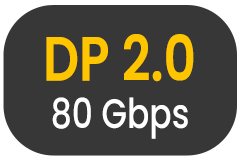 VESA released the DisplayPort 2.0 standard June 2019. This version marks the first major update since March 2016 and increases the data rate by approximately 3 times (from 25.92 to 77.37 Gbit/s) compared to the previous version (1.4a).
VESA released the DisplayPort 2.0 standard June 2019. This version marks the first major update since March 2016 and increases the data rate by approximately 3 times (from 25.92 to 77.37 Gbit/s) compared to the previous version (1.4a).
DisplayPort 2.0 introduces new capabilities to address future performance requirements for traditional displays, including support for resolutions beyond 8K, higher refresh rates, and HDR support at higher resolutions.
Configuration options include single display resolutions up to 16K at 60 Hz with 10 bpc RGB/Y'CBCR 4:4:4 color, or dual display resolutions with two 8K displays at 120 Hz. With DisplayPort 2.0's increased bandwidth, VESA offers a high degree of flexibility and configuration options for higher resolutions and refresh rates. |
| |
| Read more about Displayport 2.0 – High Speed (UHBR up to 80 Gbit/s) |
SHOW PRODUCTS |
|
|
|
|
|
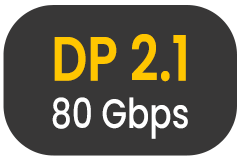 VESA announced DisplayPort version 2.1 in October 2022. This update introduces DP40 and DP80 cable certifications to ensure proper operation at speeds of 40 Gbit/s, UHBR13,5 (54 Gbit/s) and 80 Gbit/s, respectively, as introduced in version 2.0. It also revises electrical requirements to better integrate with USB4.
VESA announced DisplayPort version 2.1 in October 2022. This update introduces DP40 and DP80 cable certifications to ensure proper operation at speeds of 40 Gbit/s, UHBR13,5 (54 Gbit/s) and 80 Gbit/s, respectively, as introduced in version 2.0. It also revises electrical requirements to better integrate with USB4.
DisplayPort 2.1 aligns more closely with USB Type-C and USB4 PHY specifications, enabling a common PHY for both DisplayPort and USB4. Additionally, it adds a new bandwidth management feature to facilitate more efficient coexistence with other I/O data traffic over USB4. |
| |
| Read more about Displayport 2.1 – High Speed (UHBR up to 80 Gbit/s, USB4) |
SHOW PRODUCTS |
|
|
|
|
|
 The cable material is made of flame-retardant material and is therefore suitable for network installations in public and commercial buildings, schools, institutions, etc., as there are high requirements for cable installations to be flame-retardant or their reaction to fire according to the latest fire regulation, as described in the Construction Products Regulation EN 50575 "Power, signal, and communication cables. Cables for general application in construction works subject to reaction to fire requirements".
The cable material is made of flame-retardant material and is therefore suitable for network installations in public and commercial buildings, schools, institutions, etc., as there are high requirements for cable installations to be flame-retardant or their reaction to fire according to the latest fire regulation, as described in the Construction Products Regulation EN 50575 "Power, signal, and communication cables. Cables for general application in construction works subject to reaction to fire requirements".
The cables must also meet the requirements for a new European fire classification, determined by tests of energy content, acid formation, heat release, smoke production, droplet formation, and fire spread. The existing fire classes will be replaced with seven new categories from A to F, as detailed in the standard.
Typically, an exemption can only be given for 10% of the cables that are not flame-retardant in commercial buildings. However, to facilitate the work, it is therefore easiest to "simply" choose cables with the right approvals, within both power, network, speaker, and data cables for all fixed installations, when building new or modernizing.
The EN 50575 standard as a book is not free, but can be purchased online from official stores. |
| |
| |
SHOW PRODUCTS |
|
|
|
|
|
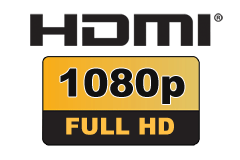 HDMI 1.4 supports a resolution up to 3840x2160 at 30 Hz and 1920x1080 at 120 Hz. At the same time, there is support for ARC, 3D, CEC management and more.
HDMI 1.4 supports a resolution up to 3840x2160 at 30 Hz and 1920x1080 at 120 Hz. At the same time, there is support for ARC, 3D, CEC management and more.
Note that HDMI 1.4 does not have the capability to support HDR. |
| |
| |
SHOW PRODUCTS |
|
|
|
|
|
 The product is ready and compatible with the newest version of Ultra HD with 4K 60 Hz support including HDCP 2.2, which is a technology for preventing illegal copying of 4K UHD content. Every piece of equipment in a setup must support HDCP 2.2 for a signal with this coding to pass through.
The product is ready and compatible with the newest version of Ultra HD with 4K 60 Hz support including HDCP 2.2, which is a technology for preventing illegal copying of 4K UHD content. Every piece of equipment in a setup must support HDCP 2.2 for a signal with this coding to pass through. |
| |
| |
SHOW PRODUCTS |
|
|
|
|
|
 The product supports 4K resolution and HDR (High Dynamic Range), which has a greater separation of color nuances, giving a wider pallette to colorize the image, and this resulting on more vibrant and lifelike colors.
The product supports 4K resolution and HDR (High Dynamic Range), which has a greater separation of color nuances, giving a wider pallette to colorize the image, and this resulting on more vibrant and lifelike colors. |
| |
| |
SHOW PRODUCTS |
|
|
|
|
|
 There is support for resolutions up to 7680x4320 as well as HDR.
There is support for resolutions up to 7680x4320 as well as HDR. |
| |
| |
SHOW PRODUCTS |
|
|
|
|
|
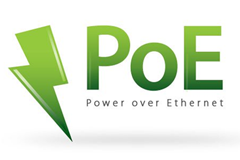 Power over Ethernet (PoE, EEE 802.3af-2003) is a cleber standard to supply ethernet connected devices, with power up to 15,4 Watt per PoE network switch port. The supply voltage are transmitted within the same ethernet cables as the data stream, and thereby only one CAT cable is needed, for e.g. IP cameras, Wi-Fi access points, door stations etc. The PoE standarden has been further developed into the PoE Plus/+ version (IEEE 802.3at-2009), which can delivery up to 25,5 Watt pr. connection, and are often utilized for HD network IP cameras.
Power over Ethernet (PoE, EEE 802.3af-2003) is a cleber standard to supply ethernet connected devices, with power up to 15,4 Watt per PoE network switch port. The supply voltage are transmitted within the same ethernet cables as the data stream, and thereby only one CAT cable is needed, for e.g. IP cameras, Wi-Fi access points, door stations etc. The PoE standarden has been further developed into the PoE Plus/+ version (IEEE 802.3at-2009), which can delivery up to 25,5 Watt pr. connection, and are often utilized for HD network IP cameras.
We recommends minimum Category 6 or 6A ethernet cables for a stable connection of PoE network equipment. |
| |
| Read more about PoE – Power over Ethernet |
SHOW PRODUCTS |
|
|
|
|
|
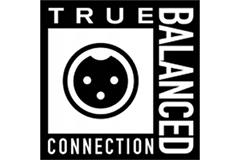 Balanced audio connections are usually known from the professional sector like recording studios or live concerts. It is very important to have a stable & interference free connection, as these signals will be highly amplified. The same applies to the connection from your turntable to the phono preamplifier. The big advantage of a balanced connection is its ability to remove picked up noise and interferences. And best of all, cartridges by nature are already balanced signal transducers! With True Balanced your are simply using everything, literally everything, that your cartridge is picking up from the record groove - To ensure the best connection to your phono preamplifier Pro-Ject designed their 'True Balanced Connection'
Balanced audio connections are usually known from the professional sector like recording studios or live concerts. It is very important to have a stable & interference free connection, as these signals will be highly amplified. The same applies to the connection from your turntable to the phono preamplifier. The big advantage of a balanced connection is its ability to remove picked up noise and interferences. And best of all, cartridges by nature are already balanced signal transducers! With True Balanced your are simply using everything, literally everything, that your cartridge is picking up from the record groove - To ensure the best connection to your phono preamplifier Pro-Ject designed their 'True Balanced Connection' |
| |
| |
SHOW PRODUCTS |
|
|
|
|
|
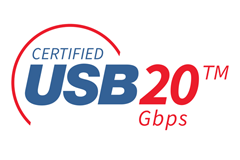 USB4 is based on the Thunderbolt 3 protocol specification. It supports 20 Gbit/s throughputs, is compatible with Thunderbolt 3, and backward compatible with USB 3.2 and USB 2.0.
USB4 is based on the Thunderbolt 3 protocol specification. It supports 20 Gbit/s throughputs, is compatible with Thunderbolt 3, and backward compatible with USB 3.2 and USB 2.0.
The architecture defines a method to share a single high-speed link with multiple end device types dynamically that best serves the transfer of data by type and application.
USB4™ identifies two transfer rates, USB4™ 20Gbps at 20Gbps and USB4™ 40Gbps at 40Gbps.
Marketing name: USB4™ 20Gbps
• Product capability: product signals at 20Gbps
Marketing name: USB4™ 40Gbps
• Product capability: product signals at 40Gbps
USB4™ Key Points:
• Two-lane operation using existing USB Type-C® cables
• Doubles the bandwidth to extend USB Type-C® performance
• Up to 40Gbps operation over 40Gbps-certified cables
• Enables multiple simultaneous data and display protocols
• Multiple data and display protocols efficiently share the total available bus bandwidth
• USB4™ hosts can optimally scale allocations for display data flow
• Backward compatibility with USB 3.2, USB 2.0 and Thunderbolt 3
The USB4™ specification compliments and build upon the existing USB 3.2 and USB 2.0 specifications. The USB4™ architecture defines a method to share a single high-speed link with multiple end device types dynamically that best serves the transfer of data by type and application.
As the USB Type-C® connector has evolved into the role of the external display port of many host products, the USB4™ specification provides the host the ability to optimally scale allocations for display data flow. Even as the USB4™ specification introduces a new underlying protocol, compatibility with existing USB 3.2, USB 2.0 and Thunderbolt 3 hosts and devices is supported; the resulting connection scales to the best mutual capability of the devices being connected. |
| |
| Read more about USB4 Gen. 2 (20 Gbit/s) |
SHOW PRODUCTS |
|
|
|
|
|
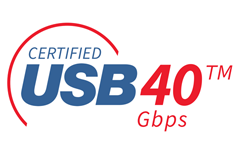 USB4 is based on the Thunderbolt 3 protocol specification. It supports 40 Gbit/s throughputs, is compatible with Thunderbolt 3, and backward compatible with USB 3.2 and USB 2.0.
USB4 is based on the Thunderbolt 3 protocol specification. It supports 40 Gbit/s throughputs, is compatible with Thunderbolt 3, and backward compatible with USB 3.2 and USB 2.0.
The architecture defines a method to share a single high-speed link with multiple end device types dynamically that best serves the transfer of data by type and application.
USB4™ identifies two transfer rates, USB4™ 20Gbps at 20Gbps and USB4™ 40Gbps at 40Gbps.
Marketing name: USB4™ 20Gbps
• Product capability: product signals at 20Gbps
Marketing name: USB4™ 40Gbps
• Product capability: product signals at 40Gbps
USB4™ Key Points:
• Two-lane operation using existing USB Type-C® cables
• Doubles the bandwidth to extend USB Type-C® performance
• Up to 40Gbps operation over 40Gbps-certified cables
• Enables multiple simultaneous data and display protocols
• Multiple data and display protocols efficiently share the total available bus bandwidth
• USB4™ hosts can optimally scale allocations for display data flow
• Backward compatibility with USB 3.2, USB 2.0 and Thunderbolt 3
The USB4™ specification compliments and build upon the existing USB 3.2 and USB 2.0 specifications. The USB4™ architecture defines a method to share a single high-speed link with multiple end device types dynamically that best serves the transfer of data by type and application.
As the USB Type-C® connector has evolved into the role of the external display port of many host products, the USB4™ specification provides the host the ability to optimally scale allocations for display data flow. Even as the USB4™ specification introduces a new underlying protocol, compatibility with existing USB 3.2, USB 2.0 and Thunderbolt 3 hosts and devices is supported; the resulting connection scales to the best mutual capability of the devices being connected. |
| |
| Read more about USB4 Gen. 3 (40 Gbit/s) |
SHOW PRODUCTS |
|
|
|
|
|
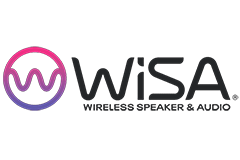 The Wireless Speaker & Audio (WiSA) Association is an industry group dedicated to implement wireless technology into stereo- and surround sound speakers, control boxes and televisions. The vision is to rid the installation of speaker wires and clunky AV receivers, while achieving quality audio and stable, synchronized connection.
The Wireless Speaker & Audio (WiSA) Association is an industry group dedicated to implement wireless technology into stereo- and surround sound speakers, control boxes and televisions. The vision is to rid the installation of speaker wires and clunky AV receivers, while achieving quality audio and stable, synchronized connection.
WiSA can be freely adopted by any manufacturer who wishes to do so. Among the first movers are Klipsch and B&O. Now also TV manufacturers are also beginning to implement WiSA wireless sound directly in flatscreens, making it easy to connect active wireless Hi-Fi WiSA speakers to the TV without cables. |
| |
| Read more about WiSA - Wireless Speaker & Audio |
SHOW PRODUCTS |
|
|
|
|
|
 The product is produced in Denmark and thereby supports a more sustainable and green way of thinking, as it saves on transport from the Far East.
The product is produced in Denmark and thereby supports a more sustainable and green way of thinking, as it saves on transport from the Far East. |
| |
| |
SHOW PRODUCTS |
|
|
|
|
|
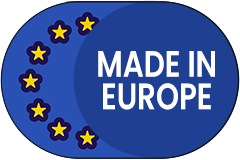 The product is produced in Europe/EU and thereby supports a more sustainable and green way of thinking, as it saves on transport from the Far East. In addition, primarily economic contributions are made to the European production and logistics chain, which benefits the EU community better.
The product is produced in Europe/EU and thereby supports a more sustainable and green way of thinking, as it saves on transport from the Far East. In addition, primarily economic contributions are made to the European production and logistics chain, which benefits the EU community better. |
| |
| |
SHOW PRODUCTS |
|
|
|
|
|
 16/7 operational reliability is your guarantee that the equipment is built for permanent operation 16 hours a day, all year round. When we talk screens / digital signage, it is all crucial for how long the screen can last. For example. Burnt-in protection so that the image does not burn onto the panel. Stronger built in relation to the environment where the screen or projector should sit.
16/7 operational reliability is your guarantee that the equipment is built for permanent operation 16 hours a day, all year round. When we talk screens / digital signage, it is all crucial for how long the screen can last. For example. Burnt-in protection so that the image does not burn onto the panel. Stronger built in relation to the environment where the screen or projector should sit. |
| |
| |
SHOW PRODUCTS |
|
|
|
|
|
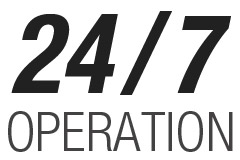 24/7 operational reliability is your guarantee that the equipment is built for permanent operation 24 hours a day, all year round. When we talk screens / digital signage, it is all crucial for how long the screen can last. For example. Burnt-in protection so that the image does not burn onto the panel. Stronger built in relation to the environment where the screen or projector should sit.
24/7 operational reliability is your guarantee that the equipment is built for permanent operation 24 hours a day, all year round. When we talk screens / digital signage, it is all crucial for how long the screen can last. For example. Burnt-in protection so that the image does not burn onto the panel. Stronger built in relation to the environment where the screen or projector should sit. |
| |
| |
SHOW PRODUCTS |
|
|
|
|
|
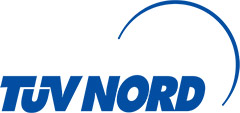 This product has undergone extensive testing to ensure that it complies with TÜV Nord's quality standard. The products are tested to be able to carry at least 3 times the weight specified for private use and at least 5 times the weight specified for professional use.
This product has undergone extensive testing to ensure that it complies with TÜV Nord's quality standard. The products are tested to be able to carry at least 3 times the weight specified for private use and at least 5 times the weight specified for professional use.
TÜV NORD is an independent certification authority and is globally recognized as a brand that guarantees excellent quality. |
| |
| Read more about TÜV approved |
SHOW PRODUCTS |
|
|
|
|
|
 This product is subject to a 3-year warranty from the manufacturer. The guarantee is given on the basis of the product's exceptionally high quality and to provide security for years to come.
This product is subject to a 3-year warranty from the manufacturer. The guarantee is given on the basis of the product's exceptionally high quality and to provide security for years to come. |
| |
| |
SHOW PRODUCTS |
|
|
|
|
|
 This product is subject to a 5-year warranty from the manufacturer. The guarantee is given on the basis of the product's exceptionally high quality and to provide security for years to come.
This product is subject to a 5-year warranty from the manufacturer. The guarantee is given on the basis of the product's exceptionally high quality and to provide security for years to come. |
| |
| |
SHOW PRODUCTS |
|
|
|
|
|
 This product is subject to a 6-year warranty from the manufacturer. The guarantee is given on the basis of the product's exceptionally high quality and to provide security for years to come.
This product is subject to a 6-year warranty from the manufacturer. The guarantee is given on the basis of the product's exceptionally high quality and to provide security for years to come. |
| |
| |
SHOW PRODUCTS |
|
|
|
|
|
 This product is subject to a 10-year warranty from the manufacturer. The guarantee is given on the basis of the product's exceptionally high quality and to provide security for years to come.
This product is subject to a 10-year warranty from the manufacturer. The guarantee is given on the basis of the product's exceptionally high quality and to provide security for years to come. |
| |
| |
SHOW PRODUCTS |
|
|
|
|
|
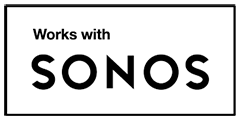 Products featuring the "Works with Sonos" badge are designed to integrate seamlessly with the Sonos Home Sound System. In today’s connected homes, we expect technology to work together effortlessly, and to enjoy our favorite music, podcasts, and radio stations in every room. When you see the Works with Sonos badge, you know the product is certified to deliver smooth integration with Sonos and meet high standards for both design and sound quality. The badge makes it easy to choose products that fit perfectly into your Sonos setup, so everything just works.
Products featuring the "Works with Sonos" badge are designed to integrate seamlessly with the Sonos Home Sound System. In today’s connected homes, we expect technology to work together effortlessly, and to enjoy our favorite music, podcasts, and radio stations in every room. When you see the Works with Sonos badge, you know the product is certified to deliver smooth integration with Sonos and meet high standards for both design and sound quality. The badge makes it easy to choose products that fit perfectly into your Sonos setup, so everything just works. |
| |
| Read more about Works with SONOS |
SHOW PRODUCTS |
|
|
|
|
|
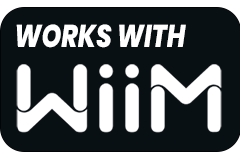 Products marked with "Works With WiiM" are fully compatible with the WiiM ecosystem and provide a smooth multiroom experience. This means you can control your music directly through the user-friendly WiiM app, access advanced EQ, room correction, and enjoy updates that continuously improve your listening experience. Choose from a range of smart products that integrate seamlessly with your existing setup.
Products marked with "Works With WiiM" are fully compatible with the WiiM ecosystem and provide a smooth multiroom experience. This means you can control your music directly through the user-friendly WiiM app, access advanced EQ, room correction, and enjoy updates that continuously improve your listening experience. Choose from a range of smart products that integrate seamlessly with your existing setup.
|
| |
| |
SHOW PRODUCTS |
|
|
|
|
|
 All Yamaha AVANTAGE products have 3 years warranty. The only requirement is that you have to get registered at Yamaha and they need a copy of your invoice.
All Yamaha AVANTAGE products have 3 years warranty. The only requirement is that you have to get registered at Yamaha and they need a copy of your invoice. |
| |
| |
SHOW PRODUCTS |
|
|
|
|
|
 The device is controllable through the manufacturer's own app, which is often freely available through Apple app store, and/or Google Play store.
The device is controllable through the manufacturer's own app, which is often freely available through Apple app store, and/or Google Play store. |
| |
| |
SHOW PRODUCTS |
|
|
|
|
|
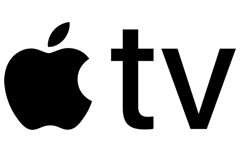 Apple's TV platform for apps for streaming services, games and much more, including Apple's TV+ service.
Apple's TV platform for apps for streaming services, games and much more, including Apple's TV+ service.
The Apple TV platform is extremely user-friendly, like everything else from Apple, which is especially beneficial in combination with an Apple iPhone, where you can use the phone for remote control and keyboard inputs, etc. |
| |
| Read more about Platform – Apple TV |
SHOW PRODUCTS |
|
|
|
|
|
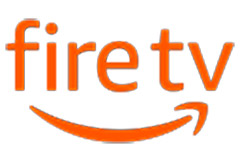 Fire TV is a smart TV system from Amazon that provides access to streaming services, apps, and live TV via an intuitive home screen. With Alexa voice control, you can easily search for content, control smart devices, and navigate hands-free. Fire TV brings all your favorite content together in one place.
Fire TV is a smart TV system from Amazon that provides access to streaming services, apps, and live TV via an intuitive home screen. With Alexa voice control, you can easily search for content, control smart devices, and navigate hands-free. Fire TV brings all your favorite content together in one place. |
| |
| |
SHOW PRODUCTS |
|
|
|
|
|
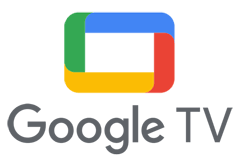 Android/Google TV is an operating system for smart TVs developed by Google. Just like on mobile Android devices, it is possible to download apps via the Google Play store, including streaming services, games and much more.
Android/Google TV is an operating system for smart TVs developed by Google. Just like on mobile Android devices, it is possible to download apps via the Google Play store, including streaming services, games and much more.
Google TV is the alternative to the Apple TV platform and Fire TV from Amazon. |
| |
| Read more about Platform – Google TV (Android TV) |
SHOW PRODUCTS |
|
|
|
|
|
 A touch screen is a display device that allows the user to interact with a computer using their finger or a touch pen. They are a useful alternative to a mouse or keyboard for navigating. Touch technology is used on a variety of devices, such as screens of all sizes, projectors for classrooms or meeting rooms, cash registers and information screens, etc.
A touch screen is a display device that allows the user to interact with a computer using their finger or a touch pen. They are a useful alternative to a mouse or keyboard for navigating. Touch technology is used on a variety of devices, such as screens of all sizes, projectors for classrooms or meeting rooms, cash registers and information screens, etc. |
| |
| |
SHOW PRODUCTS |
|
|
|
|
|
 Amazon Alexa, also known simply as Alexa, is a virtual assistant AI technology developed by Amazon, first used in the Amazon Echo smart speakers developed by Amazon Lab126. It is capable of voice interaction, music playback, making to-do lists, setting alarms, streaming podcasts, playing audiobooks, and providing weather, traffic, sports, and other real-time information, such as news. Alexa can also control several smart devices using itself as a home automation system.
Amazon Alexa, also known simply as Alexa, is a virtual assistant AI technology developed by Amazon, first used in the Amazon Echo smart speakers developed by Amazon Lab126. It is capable of voice interaction, music playback, making to-do lists, setting alarms, streaming podcasts, playing audiobooks, and providing weather, traffic, sports, and other real-time information, such as news. Alexa can also control several smart devices using itself as a home automation system. |
| |
| |
SHOW PRODUCTS |
|
|
|
|
|
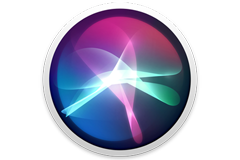 Siri is an intelligent voice assistant created by Apple. Siri can help you control your smarthome devices.
Siri is an intelligent voice assistant created by Apple. Siri can help you control your smarthome devices. |
| |
| |
SHOW PRODUCTS |
|
|
|
|
|
 The intelligent voice assistant from Google, that is avaliable on smartphones and smarthome devices. The Google Assistant can assist you with your daily routines and can be used to control your smart lighting and smart speakers.
The intelligent voice assistant from Google, that is avaliable on smartphones and smarthome devices. The Google Assistant can assist you with your daily routines and can be used to control your smart lighting and smart speakers. |
| |
| |
SHOW PRODUCTS |
|
|
|
|
|